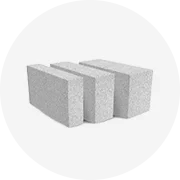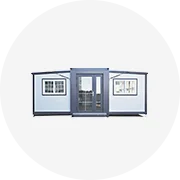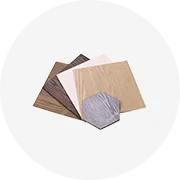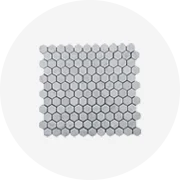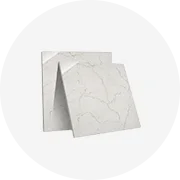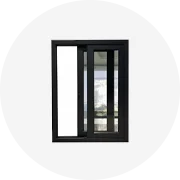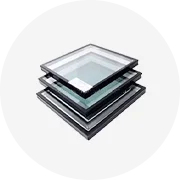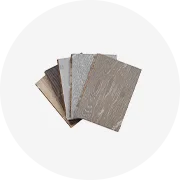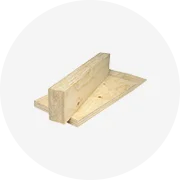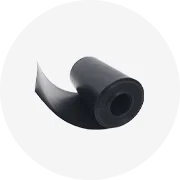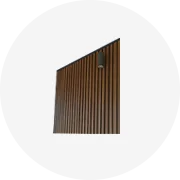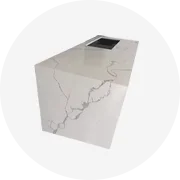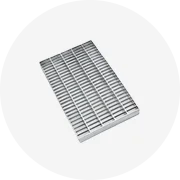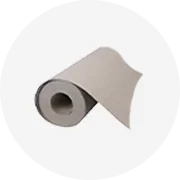Lake fountain
(5754 products available)






Fenlin Factory Outdoor Small or Large Lake Pond Floating Stainless Steel Water Fountain



1D or 2D Swing Jet Nozzle for Water Art Outdoor Garden or Pool Technical Support Swing Spray Digital Nozzle Big Lake Fountain






Programming DC24V Dmx Fountain Pump with Controller for Outdoor Lake Pond Music Mater Dancing Water Fountain






Full Set Outdoor Modern Small Round Stainless Steel Dancing Music Garden Lake Decorative Home Water Fountain
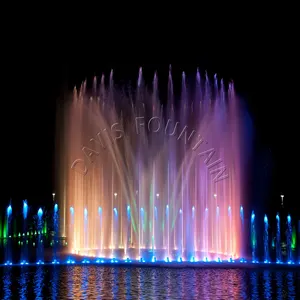





Outdoor Luxury Water Feature Lake Small Dancing Musical Floating Pond Fountain






Outdoor Swing Dancing Musical Water Fountain for Lake River Pond With Free Design






Large Lake Outdoor Dancing Water Show 50M High Pressure Water Jet Dancing Fountain






Small Lake Musical Laser Beam Light Fountain Equipment Outdoor Mini Musical Dancing Pond Fountains with Light






2025 Outdoor Custom-Size High Jet Water Fountain Single Pond Lake Spray Fountain
Popular in your industry






India Lake Outdoor Amazing Fan Shape Water Screen Movie Projection 3D Hologram Water Fountain with Projector and Laser






Outdoor Special Floating Water Feature Fountain Factory Small or Large Lake Pond Floating Water Fountain






China Supplier Factory Direct Supply Floating Pond or Lake Water Music Fountain With RGB Lights






Lake Floating Mega Geyser Stainless Steel Water Fountain Big Water Fountains






Customized Table Top Zen Garden Buddha Fountain Includes Sand Rocks Lake and Bonsai






Customize Lager Lake Water One Dimensional Fountain Nozzle Adjustable 3d Nozzle Fountain






Customized Multi-Color Stainless Steel Waterfall Modern Outdoor Water Curtain for Garden Lake Villa Fountains






Round Small Musical Dancing Floating Portable Decor Water Fountain for Lake





Outdoor Lake Movie Projection 10m Height Lake Floating Water Movie Projection Fountains






Stone Water Fountain Garden Fountains for Sale Water Falls Granite Geyser Casade Outdoor Fengshui Garden Lake Fountains





2025 New Trendy Outdoor Custom Stainless Steel Musical Fountain Dancing Water Fountain for Lake Decoration






2 Sprinkler Modes Light Show Pond Water Fountain Above Ground Pool Lake Garden Waterfall Fountain






Outdoor Large Stainless Steel Musical Dancing Water Fountain with Sculpture Decoration in Pond, Pool, Shopping Mall and Lake






Custom outdoor lake stainless steel color led lights musical dance water feature fountain






Water Crown Customized Sea Fountain Lake Colorful LED Lights DMX Control Music Dancing Fountain Outdoor






Outdoor Home Garden Lake Patio Decorative Modern Round Stainless Steel Dancing Music Water Fountain






2hp Floating Fountain and Splash Aerator With Water Pump Function Produce Oxygen for Pond Lake












Outdoor Fountain Garden Lake Pond Home Decoration Water Dancing Music Fountain with Light






1D 2D 3D Nozzle Stainless Steel Water Outdoor Large Waterfall Music Dancing Lake Jumping Jets Pond Show Fountain






Resin Waterfall Garden Outdoor Solar Fountain Water Feature With Led Lights Solar Powered Fountain for Pool Lake Using






Color Changing Music Fountain Lake Floating Water Pond Pump Fountain





Fountain for Pool Lake Birdbath Pump Plastic Spray Ornaments Solar Powered Low Garden Water Jet






Dancing Fountain Pump , Fountain Floating Pump for Lake , Fountain Micro Pump






Modern 3D Effect Stainless Steel Projector Custom Large Water Curtain Screen Projection Musical Fountain With Outdoor Sea Lake






Highly Automated Stone Outdoor Smoke Fireworks Big Size Garden Lake Floating Fountain






AWS Full Color Lake Pond Water Fountain Customized Outdoor Pool Fountain Small

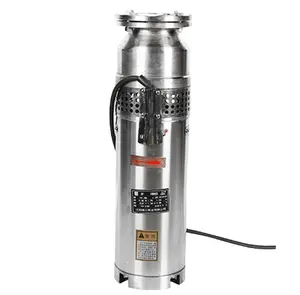




High Head Lake Fountain Pump Stainless Steel Water Fountain Supplier in Malaysia Fountain Pump
Top categories
About lake fountain
Types of Lake Fountain
A lake fountain is a decorative structure that can be installed in a lake, pond, or any large water body. It improves the aesthetic appeal of the water body and introduces beauty and elegance to the surroundings, making them look more attractive.
Lake fountains come in different types, such as:
-
Floating Fountains:
This type of lake fountain is the most common. They are usually installed in ponds and small lakes. They run on solar energy or electricity. These fountains enhance aeration in the water body and are held in place by a weight and a mooring line.
-
Submersible Fountains:
These types of lake fountains are installed near the shoreline. They are installed underwater and create a decorative effect on the water surface. Submersible fountains use a submersible pump to draw water and aerate it, improving aesthetics and water quality. They are an ideal choice for large lakes and ponds.
-
Solar Fountains:
Solar-powered lake fountains are becoming increasingly popular because they are eco-friendly and energy-efficient. They have solar panels mounted around the lake, pond, or water body, and they use sunlight to generate power. These fountains are easy to install and do not incur electricity costs, making them a good choice for small lakes and ponds.
-
Pedestal Fountains:
This type of lake fountain is supported by a pedestal or a post. They are more suitable for larger water bodies. The fountain's water source is usually concealed in the pedestal. They are popular because of their classic and elegant look.
-
Lighted Fountains:
These types of fountains are installed in large water bodies. They are fitted with decorative lights that illuminate the water stream, creating a beautiful and stunning visual effect at night. The lights can be colored to add more vibrancy and appeal.
-
Ornamental Fountains:
Ornamental lake fountains are a popular choice for public parks and recreational areas. They have visually striking water displays with multiple tiers, sculptures, and intricate designs that offer an aesthetic appeal. They require regular maintenance to keep them in good condition because they are prone to collecting debris and algae.
Function and Feature of Lake Fountain
Decorative and functional elements, such as lake fountains, enhance the beauty of any outdoor space and have a lot of functions. Here are some features and functions worth noting:
-
Aesthetic Appeal
Lake fountains are visually appealing and add beauty to any landscape. They are stunning to look at and make any place, whether residential or commercial, more beautiful and inviting.
-
Water Aeration
Aeration is an important process for water bodies. Lake fountains help with this by agitating the water and promoting oxygen circulation. This is important for fish and other aquatic life. It also prevents the growth of algae, making the water body healthier.
-
Sound of Water
Lake fountains produce the sound of trickling or rushing water. This sound makes outdoor spaces more relaxing and peaceful. It helps create a serene environment that is more enjoyable to spend time in.
-
Wildlife Attraction
Lake fountains also attract wildlife. The sound of water and the presence of water make these areas attractive to birds, insects, and other animals. This brings more life to the landscape and makes it a natural habitat.
-
Water Circulation
These fountains are also important for the circulation of water. The movement of water helps prevent stagnation and ensures a constant supply of oxygen. This is important for the health of the water body and aquatic life.
-
Customization
Lake fountains come in different sizes, styles, and designs that can be tailored to meet specific needs and preferences. This customization ensures that the fountain can fit in any lake or pond, irrespective of its size. Additionally, the fountains can be fitted with different types of jets that produce varied water patterns.
-
Lighting Options
Some lake fountains come with lighting. The lights illuminate the water at night and create a beautiful and dramatic effect. This adds beauty to the landscape at night and makes the fountain a point of interest.
Scenarios of lake fountain
Lake fountains are decorative and functional features found in parks, residential areas, and commercial properties. They have various applications. Here are some common usage scenarios.
-
Ornamental Purposes
Lake fountains improve the aesthetics of an area by adding visual appeal. They create an eye-catching effect that makes a space feel more welcoming and vibrant. Large fountains with dynamic water displays are ideal for this purpose.
-
Water Aeration
A lake decorative fountain can help oxygenate the water, which is important for fish and other aquatic organisms. The water is aerated when the fountain pumps water to the top and releases it back into the lake. This process is important for maintaining a healthy ecosystem in the lake.
-
Recreation
Lake fountains can be used for fun activities. Small fountains that shoot water in straight lines are great for kids to play in canoes and kayaks. Bigger fountains create exciting water displays that people watch from the shore or in boats. Some fountains even shoot water high up into the air in different shapes during festivals and events.
-
Water Circulation
Lake fountains help circulate the water, which stops algae from growing and keeps the water clear. When the water circulates, it mixes together, preventing stagnant areas where algae can thrive. This circulation also spreads nutrients evenly throughout the lake. Clear water and low algae growth make the lake look better and support fish and other wildlife.
-
Wildlife Habitat
Some fountains create splashes and puddles that attract animals like frogs, turtles and birds. The moving water also provides areas for fish to spawn and lay eggs. Overall, a lake fountain helps support and create homes for many types of wildlife.
-
Lake fountains as markers
Lake fountains can help mark important spots on the water. For example, a fountain can show where a channel is located or highlight a boat docking area. The fountains make these locations more visible so boats and people can safely navigate.
How to choose a lake fountain
When considering lake fountains for sale, buyers should consider a few things to ensure they get a product that meets their needs. Here are some of them:
-
Application
Buyers should determine the purpose of the fountain. Is it for decorative purposes, aeration, or both? Knowing the purpose will help in deciding which type of fountain is ideal.
-
Power and size
Business owners should get lake fountains that are appropriately sized for the lakes they will be used in. They should also ensure the fountains have suitable power. A small lake can lead to low circulation and aeration, and a large one can be too powerful and cause turbulence.
-
Construction and durability
Buyers should look for a lake fountain built with durable materials, such as stainless steel. This material is resistant to corrosion and will ensure the fountain lasts a long time.
-
Maintenance
Buyers should settle for fountains that are easy to maintain. They can check the reviews to find out the level of maintenance required for different types of fountains before buying them.
-
Features
Buyers should check the features of various lake fountains and settle for one that meets their needs. Some come with LED lights, multiple spray patterns, and adjustable height, which can be beneficial in enhancing the aesthetic appeal of the lake.
-
Noise level
Buyers who want a fountain that produces minimal noise should look at the specifications to find out the noise level. Most manufacturers indicate the noise level in decibels. They can check the options available and choose the one that has the lowest noise level.
-
Warranty and support
Buyers should check the warranty provided by the manufacturer and the level of customer support. A good warranty covers most damages and tells the number of years it is valid. Reliable customer support is also important in case there are issues or questions about the product.
Lake Fountain Q & A
Q1: Do solar-powered fountains work in all weather conditions?
A1: Solar-powered fountains need direct sunlight to work effectively, so they may not operate at full capacity during overcast or rainy days. Depending on the type of system, some installations may include a battery backup that stores energy for use during less sunny times.
Q2: How can the size of a fountain be determined?
A2: The size can be determined by measuring the depth and width. The overall dimensions can be obtained by measuring the height, width, and depth. Size matters when choosing a lake fountain for aesthetics and balance. For visual harmony, a larger fountain may be more suited to a bigger body of water, while a smaller fountain may be more suited to a smaller body of water.
Q3: Can decorative elements be added to improve the appearance of a lake fountain?
A3: Yes, decorative elements can be added to improve the appearance of a lake fountain. These may include LED lights to illuminate the fountain at night, floating plants for a natural touch, or tiered structures for added elegance. Always ensure any additions maintain the fountain's functionality and ecological balance.
Q4: How is the height of a fountain determined?
A4: The height can be measured from the base, where it sits on the water, to the highest point that water reaches as it sprays or cascades. This can be measured using a tape measure or ruler. In the case of floating fountains, they may be adjusted to different heights using control mechanisms.
Q5: Can someone build their own lake fountain?
A5: Yes, it is possible to build a homemade lake fountain. However, it is important to have the right materials, tools, and knowledge about the construction process. It is advisable to start with DIY projects that have detailed instructions rather than attempting highly complex designs that could pose safety risks.

















